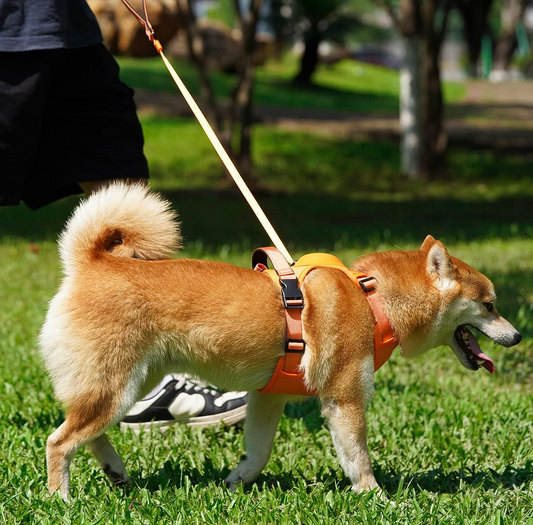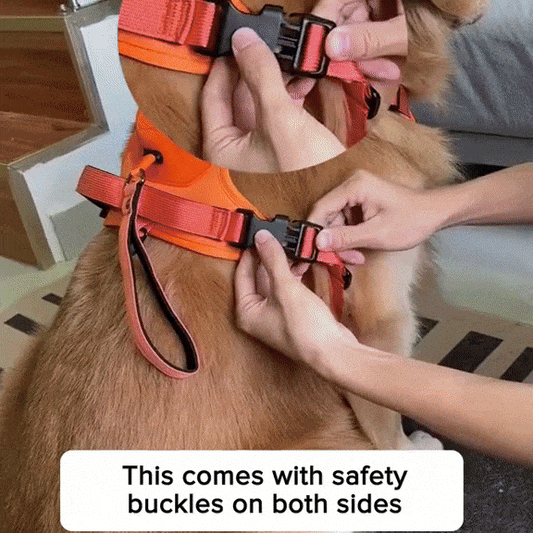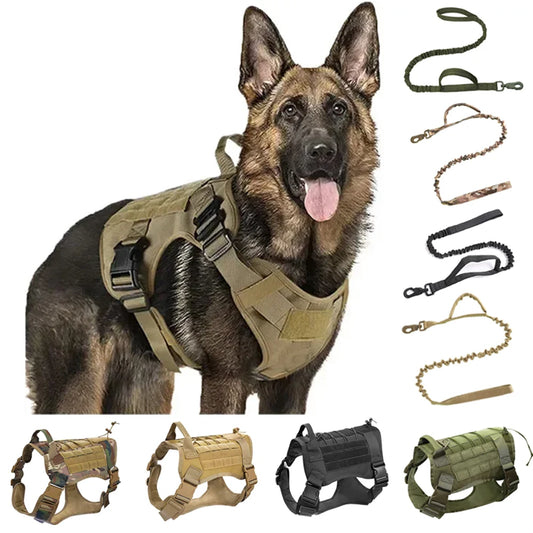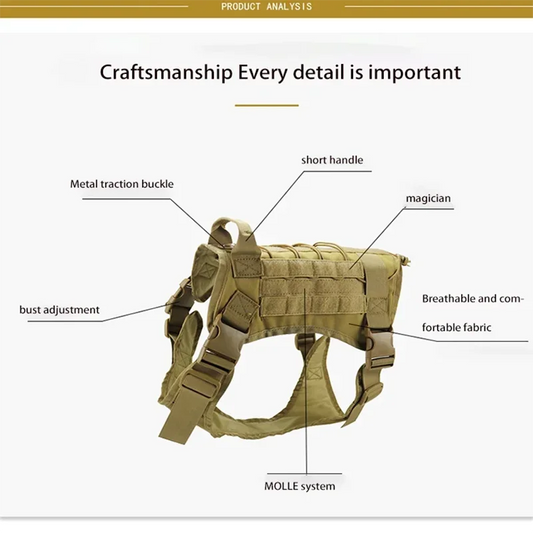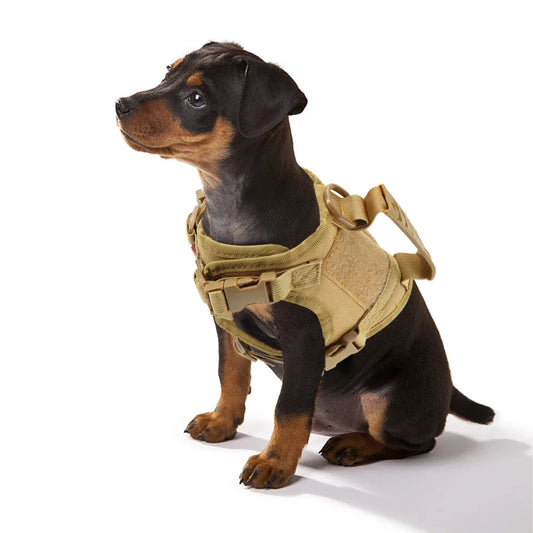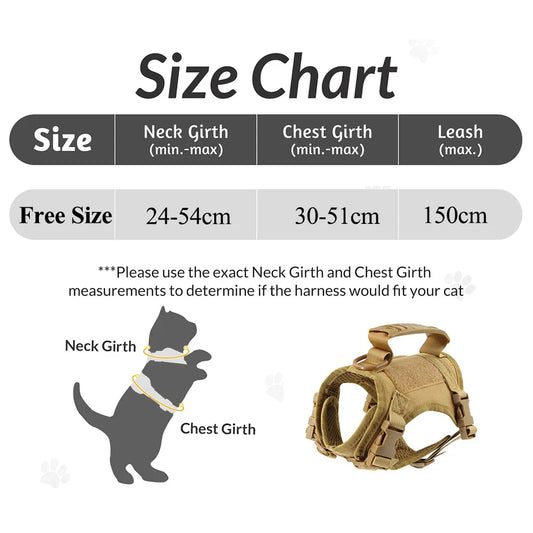Dog Leads
Walking your dog isn’t just something you have to do—it’s one of the best parts of the day. It’s a chance to get outside, stretch your legs and spend quality time together. Dog leashes come in many types and styles, each designed for different purposes, from training and outdoor adventures to everyday walks. But let’s be real: a flimsy or awkward lead can turn that relaxing stroll into a tug of war.
Choosing dog leashes isn’t just about picking the prettiest one. Some leads are designed for specific needs or activities, so it’s important to find one that suits your dog's size, behaviour, and lifestyle—while feeling good in your hand. A good lead means safer, smoother walks and more fun with your pup.
Let’s break it down.
Why the Right Dog Leash Really Matters
Your dog’s lead is more than just a strap—it’s your communication line, a tool for safety and part of your daily routine. The right lead gives you peace of mind when you’re out in the world whether you’re navigating busy streets or a quiet nature trail.
Good dog leashes:
-
Helps you stay in control in unexpected situations
-
Reduces strain on your hands and wrists
-
Keeps your dog safe and close
-
Makes walking more enjoyable for both of you
“Lead” vs “Leash”: What’s the Difference?
You’ll often hear people use these words interchangeably—and that’s okay. But here’s a quick breakdown for the curious:
-
Leash: Most common term, especially in the US. It usually implies restraint and control.
-
Lead: More commonly used in the UK or in training settings. It often suggests guidance rather than just holding your dog back.
In practice they’re used the same way so don’t overthink it—just pick the one that feels natural to you.
Types of Dog Leashes: Which One’s Right for You?
There’s no one size fits all when it comes to dog leashes. Each type of lead is a product with specific features and use cases designed to suit different needs. Discover the right product for you and your dog by exploring the most popular options and learning how to choose the best one.
Standard Flat Leads (4-6 feet)
The go to for everyday walks. Made from nylon, leather or cotton these are durable and easy to handle. Look for padded handles for extra comfort. Perfect for city walks, trips to the vet or basic training. Standard flat leashes are usually made of a tough nylon weave and are 4-to-6-feet long. Great for letting your dog explore a little—perfect for parks and open areas. You control the length with a button. Just don’t use these near traffic or with dogs that pull hard—they can make training harder and reduce your control in a pinch.
Hands-Free Dog Leashes
Love to jog or multitask? These leashes wrap around your waist and often have a stretchy bungee section to absorb shocks. Some hands-free leashes can also be used as a hand held option for added versatility. Hands-free leashes come with an adjustable loop that's worn around the handler's waist. Ideal for active lifestyles and keeping both hands free.
Slip Leads
A favourite among vets and trainers. These combine a collar and lead in one, slipping over your dog’s head and tightening with pressure. Slip leads are easy to slip on and off the dog and should only be used with well-trained dogs. Fast and simple to use but not ideal for pullers or dogs with sensitive necks. Best for quick outings or training sessions.
Training Leads (10-30+ feet)
Long, lightweight lines used for recall, commands or exploring open spaces safely. Often made of biothane or strong nylon. A strong, comfortable long leash is essential for helping your dog feel free while still staying safe.
Martingale Leads
These have a limited-slip collar for dogs that back out of regular collars—especially useful for sighthounds. They offer a bit more control without choking.
Tactical & Heavy-Duty Leads
Built for strength and performance, these leads are also suitable for search operations, such as Search and Rescue (SAR) activities. Think reinforced clips, military-grade materials and extra features like MOLLE loops for gear. Heavy-duty tactical dog leashes are made from high-strength materials with reinforced stitching. Great for working dogs, big breeds or outdoor adventurers.
Retractable Leashes
Retractable leashes are a popular choice for dog owners who want to give their dogs a bit more freedom while still keeping them safe and secure. This type of dog leash features a strong nylon cord or tape that extends and retracts smoothly from a comfortable plastic handle, allowing your dog to explore their environment at varying distances—sometimes up to 30 feet. With a simple push of a button, you can lock the leash at your desired length, making it easy to adjust how far your dog can roam as you walk. Retractable leashes are especially helpful for dog training, as they let your dog learn to walk on a leash while still enjoying some independence. They’re great for open spaces where your dog can safely explore, but always remember to use them responsibly and avoid busy or high-traffic areas. With the right approach, retractable leashes can make walks more enjoyable for both you and your dog.
What Makes a Good Dog Lead?
When shopping keep these must-haves in mind:
-
Padded Handle: Your hands will thank you—especially with pullers or long walks.
-
Strong Clip & Attachment Point: Look for a secure, easy to use clip and a durable attachment point, such as a swivel snap or ring, to ensure the leash stays safely connected and won’t pop off accidentally.
-
Reflective Elements: Safety first. Make sure you’re visible on early morning or nighttime walks.
-
Durable Materials: Nylon, biothane, leather—each has its pros. Just make sure it’s tough and well-stitched.
-
Right Width & Length: Thicker for big dogs, thinner for smaller ones. Standard 4-6 ft leashes give good control.
Leash Materials: What to Expect
Each leash material has its own feel, strengths and quirks:
-
Nylon: Budget friendly and strong but can cause burns if your dog pulls.
-
Leather: Stylish, durable and softens over time. Needs a bit of maintenance.
-
Biothane: Waterproof, odor resistant and easy to clean—perfect for messy pups.
-
Cotton or Rope: Soft and eco-friendly but can stretch and isn’t as durable.
-
Chain: Mostly used for dogs that chew through everything. Heavy and not the most comfortable but effective when needed. Chain leashes have a nylon or leather handle and a chain that comes in a variety of thicknesses.
Don’t Forget: Comfort for You Matters Too
A good leash should feel as good in your hand as it looks on your dog. You want something that’s easy to grip, doesn’t dig into your palm and doesn’t cause fatigue.
Look for:
-
Cushioned or ergonomic handles
-
Lightweight materials if your dog is small
-
A design that matches your walking style—especially for longer outings
Safe Leash Practices for Every Walk
Your leash is only as safe as how you use it. Remember:
-
Always check the clip is fully secured before walking.
-
Avoid retractable leads in traffic or crowded areas.
-
Use reflective gear at night or in low light areas.
-
Inspect your leash regularly for wear and tear.
-
Never wrap the leash around your hand—use the handle or a traffic loop instead.
Got a Strong Puller? Here’s What Helps
If your dog turns every walk into a strength contest here are a few tools that can help:
-
Front-Clip Harnesses: Redirects pulling and gives you more control.
-
Head Halters: Gently guides your dog’s head—similar to how halters work on horses.
-
Leash Training: Practice loose-leash walking techniques consistently.
-
Shock-Absorbing Leashes: These reduce jarring movements and protect your hands and arms.
Add-Ons & Extras: Leashes That Go the Extra Mile
Once you’ve got your everyday leash sorted consider some helpful extras:
-
Matching Sets: Collars, harnesses and leashes in the same style keep things tidy and stylish.
-
Built-In Features: Some leashes come with poop bag dispensers or treat holders.
-
Spare Leashes: Always keep a backup in your car or by the door—just in case of an emergency or unexpected situation.
The Benefits of Leashed Walks
Taking your dog for a walk on a leash is about so much more than just exercise—it’s a chance to build a stronger bond and help your dog learn about the world. Using a dog leash, whether it’s a hands free leash, a padded handle leash, or a classic style, gives you the control you need to keep your dog safe while exploring the outdoors together. Leashed walks are perfect for dog training, teaching your dog to respond to commands, and helping them socialize with other dogs and people. They also provide essential mental stimulation and help reduce stress and anxiety for your dog. Plus, walking side by side with your dog is a great way to enjoy fresh air, get some exercise, and create lasting memories. No matter which leash you choose, every walk is an opportunity to strengthen your bond and enjoy the adventure together.
Common Issues with Dog Leads (and How to Solve Them)
Even the best dog leashes can sometimes cause a few headaches, but most issues have simple solutions. Tangling is a common problem, especially with active dogs who love to explore. To cut down on knots, try a dog lead with a swivel clip or opt for a slip lead, which naturally resists twisting. If you find your leash uncomfortable to hold, look for options with a padded handle or ergonomic grip—your hands will thank you on longer walks. Durability is another key factor; a strong dog lead made from quality materials like nylon or leather will stand up to daily use and energetic dogs. Always check the clip to make sure it’s secure and easy to attach to your dog’s collar or harness. By choosing the right lead for your needs and keeping comfort and strength in mind, you can make every walk smoother and more enjoyable.
Keeping Your Leash in Top Shape: Maintenance Tips
A well-cared-for dog leash is safer, lasts longer, and makes every walk more enjoyable. To keep your leash in top shape, give it a regular clean—especially after muddy adventures or trips to the park. Use mild soap and water to wash away dirt and bacteria, and avoid harsh chemicals that could weaken the material. Whether you use a hands free leash, a standard dog leash, or a retractable model, it’s important to inspect your leash often for signs of wear, like fraying or cracking. Replace your leash if you spot any damage to keep your dog safe. When you’re not out walking, store your leash in a cool, dry place to prevent moisture or heat from causing damage. With a little care and attention, your leash will stay strong and reliable, ready for every adventure you and your dog take together.
Your Perfect Leash Is Out There
At the end of the day the best leash is the one that fits your dog’s needs and your lifestyle. Whether you’re after the sleek simplicity of a slip lead, the high-tech convenience of a hands-free model or the rugged strength of a tactical leash—you’ve got options at Rover Rituals

